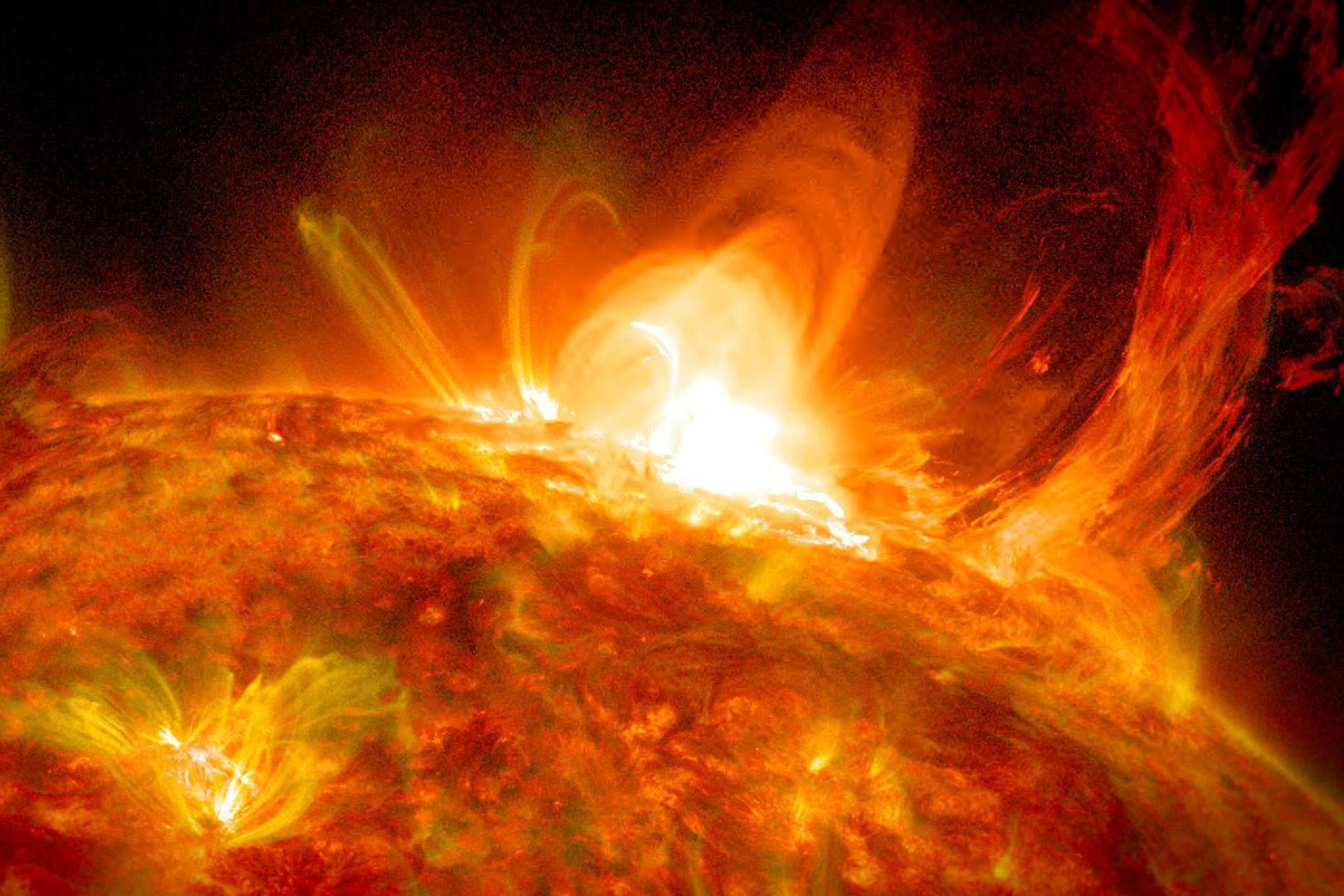The Independent's journalism is supported by our readers. When you purchase through links on our site, we may earn commission.
Sun enters 'solar minimum' but Earth to avoid another 'little Ice Age'
Solar minimums are part of the sunspot cycle and indicate greater activity from the star

Cosmic rays – high-energy particles that move through space at the speed of light – are intensifying as the Sun enters a 'solar minimum', which could be a hazard to astronauts and produce more storms.
The reason that rays are intensifying is because of the lack of sunspots – dark spots that appear on the Sun’s surface caused by magnetic fields which illuminate earth with X-ray and ultraviolet radiation.
A solar minimum, which is a “regular part of the sunspot cycle,” according to Dean Pesnell of Nasa's Goddard Space Flight Center, means that the Sun’s magnetic field is weak. This results in extra cosmic rays entering the solar system.
Neutron counts from the University of Oulu's Sodankyla Geophysical Observatory show that cosmic rays reaching Earth in 2020 are near a Space Age peak” wrote Dr. Tony Phillips on his website.
“So far this year, the sun has been blank 76 per cent of the time, a rate surpassed only once before in the Space Age. Last year, 2019, the sun was blank 77 per cent of the time. Two consecutive years of record-setting spotlessness adds up to a very deep Solar Minimum” Phillips also wrote, while suggesting that “excess cosmic rays...affect the electro-chemistry of Earth’s upper atmosphere and may help trigger lightning.”
Some have speculated that the lowered output from the sun could result in a “Little Ice Age”, similar to the one that occurred between the 14th and 19th century and happened concurrently with mountain glacier expansion in the European Alps, New Zealand, and Alaska among other locations, and lower temperatures across the northern hemisphere.
However, even that has been contended, with research suggesting that "multiple factors, particularly volcanic activity, were crucial for causing the cooler temperatures" and that "a reduction in total solar irradiance likely contributed ... at a level comparable to changing land use."
Nasa also says any major change is unlikely: “In terms of climate forcing – a factor that could push the climate in a particular direction – solar scientists estimate it would be about -0.1 W/m2, the same impact of about three years of current carbon dioxide (CO2) concentration growth.”
“Thus, a new Grand Solar Minimum would only serve to offset a few years of warming caused by human activities [and] the warming caused by the greenhouse gas emissions from the human burning of fossil fuels is six-times greater than the possible decades-long cooling from a prolonged Grand Solar Minimum.” the space agency said.
While Dr. Phillips also suggests that this is a “record-setting” period of spotlessness, others have contested that claim. “Some people are speculating that the behavior of the solar cycle is extremely weak,” he says. “But it’s not extremely weak, it’s probably just the weakest one in the past four solar cycles” said Alexander Shapiro, a scientist at the Max Planck Institute for Solar System Research in Germany, and that for the past 50 years (approximately four solar cycles) the sun has been unusually active.
Though the Earth may not see the effects of this change, astronauts are at a higher risk. “During solar minimum, the sun’s magnetic field weakens and provides less shielding from these cosmic rays. This can pose an increased threat to astronauts travelling through space” Pesnell says.
Join our commenting forum
Join thought-provoking conversations, follow other Independent readers and see their replies
Comments
Bookmark popover
Removed from bookmarks